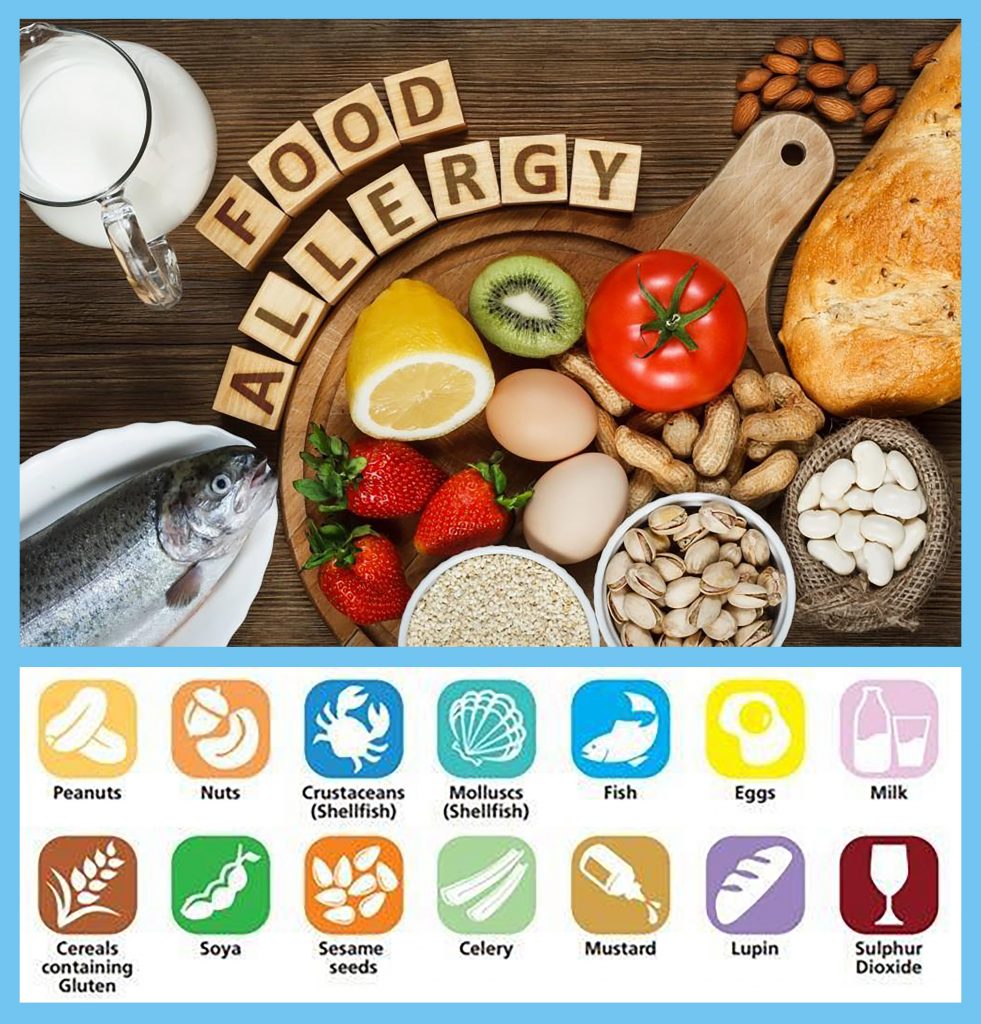
Understanding Food Allergies: Causes, Symptoms, and Management
Food allergies are a growing concern worldwide, affecting millions of people of all ages. While some individuals experience mild discomfort or inconvenience, food allergies can be life-threatening for others. Understanding food allergies, their causes, symptoms, and management is essential for both those affected and the broader community.
What Are Food Allergies?
A food allergy is an abnormal immune response to certain proteins found in specific foods. When an individual with a food allergy consumes the offending food, their immune system overreacts, producing antibodies like immunoglobulin E (IgE). This immune response leads to various allergic symptoms, ranging from mild to severe, and sometimes even fatal.
Common Food Allergens
While any food can potentially cause an allergic reaction, certain foods are more likely to trigger allergies than others.
The most common food allergens include:
- Peanuts
- Tree nuts (e.g., almonds, walnuts, cashews)
- Milk
- Eggs
- Fish
- Shellfish (e.g., shrimp, crab)
- Soy
- Wheat
It’s important to note that cross-contamination between allergenic and non-allergenic foods can also pose a risk to individuals with food allergies, making careful label reading and communication with food service providers crucial.
Causes of Food Allergies
Food allergies result from a complex interplay of genetic and environmental factors. Some individuals may be genetically predisposed to develop allergies, as they have family members with similar conditions. Environmental factors, such as early exposure to allergenic foods or a lack of exposure to certain allergens, can also play a role.
Symptoms of Food Allergies
The symptoms of a food allergy can vary widely in severity and can manifest within minutes or up to a few hours after consuming the allergenic food. Common symptoms include:
- Skin reactions (hives, itching, eczema)
- Gastrointestinal issues (nausea, vomiting, diarrhea)
- Respiratory problems (coughing, wheezing, shortness of breath)
- Swelling of the lips, tongue, or throat
- Anaphylaxis (a severe, potentially life-threatening allergic reaction)
Anaphylaxis is the most serious and immediate allergic reaction, requiring immediate medical attention. Symptoms can include a drop in blood pressure, difficulty breathing, and loss of consciousness. Prompt administration of epinephrine is essential to reverse the effects of anaphylaxis.
Diagnosis and Management
If you suspect a food allergy, consult with a healthcare provider, preferably an allergist. The allergist will conduct various tests, including skin prick tests, blood tests, and oral food challenges, to diagnose the allergy accurately. Once diagnosed, managing a food allergy involves several key strategies:
- Strict Avoidance: The primary approach to managing food allergies is to avoid the allergenic food entirely. This includes reading ingredient labels carefully and asking about food preparation methods when dining out.
- Epinephrine: Individuals at risk of anaphylaxis should carry an epinephrine auto-injector (e.g., EpiPen) at all times. Learning how to use it and having it readily available can be life-saving.
- Allergy Action Plan: Work with your healthcare provider to develop an allergy action plan that outlines steps to take in case of an allergic reaction.
- Educating Others: It’s important to educate family members, friends, coworkers, and school personnel about your food allergy to ensure a safe environment.
- Support Groups: Joining a support group or online community for individuals with food allergies can provide valuable information, emotional support, and a sense of community.
List Of Some Rare Food Allergies
While the most common food allergies involve substances like peanuts, tree nuts, milk, eggs, fish, shellfish, soy, and wheat, there are some rare food allergies that affect a smaller portion of the population. These rare food allergies can be equally challenging and potentially life-threatening for those who have them.
Here are a few examples of rare food allergies:
- Red Meat Allergy (Alpha-Gal Allergy): This allergy is caused by the bite of a lone star tick, which can trigger an immune response to a sugar molecule called alpha-gal found in red meat (e.g., beef, pork, lamb). Individuals with this allergy may experience delayed allergic reactions several hours after consuming red meat.
- Fruits and Vegetables: Some people may develop allergies to specific fruits or vegetables. For instance, oral allergy syndrome (OAS) can cause cross-reactivity between pollen allergens and certain fruits and vegetables. This can result in itching, tingling, or swelling in the mouth and throat when consuming raw fruits and vegetables like apples, cherries, or celery.
- Galactose-α-1,3-Galactose (Alpha-Galactosidase) Allergy: This allergy is linked to a carbohydrate molecule found in mammalian meat, such as beef, pork, and lamb. It is known to cause delayed allergic reactions, often several hours after eating the allergenic food.
- Wheat-dependent exercise-induced Anaphylaxis (WDEIA): This is a rare form of wheat allergy where individuals experience an allergic reaction only when consuming wheat products before or during physical exercise. It is believed to be related to specific proteins found in wheat and exercise-induced factors.
- Buckwheat Allergy: Buckwheat is a gluten-free grain that is uncommonly allergenic. However, some individuals may have an allergy to buckwheat, which can lead to symptoms like hives, digestive issues, or respiratory problems.
- Sesame Allergy: While sesame is a common ingredient in many cuisines, it is also one of the allergens that must be labeled in food products in some countries. Sesame allergy can cause allergic reactions ranging from mild skin irritation to severe anaphylaxis.
- Annatto Allergy: Annatto is a natural food coloring derived from the seeds of the achiote tree. Some individuals may develop an allergy to annatto, leading to symptoms like hives, itching, or gastrointestinal discomfort.
- Mustard Allergy: Mustard allergy is relatively rare but can cause allergic reactions when consuming products containing mustard seed, mustard oil, or prepared mustard condiments.
- Corn Allergy: Corn allergy is less common than some other grain allergies like wheat or soy, but it can lead to various allergic symptoms when corn or corn-derived products are consumed.
- Royal Jelly Allergy: Royal jelly, a secretion produced by honeybees and used as a dietary supplement, can cause allergic reactions in some individuals. These reactions can range from mild skin rashes to severe anaphylaxis.
It’s essential to recognize that even rare food allergies can have serious consequences, so individuals with these allergies must be vigilant about reading food labels and avoiding exposure to allergenic foods. If someone suspects they have a rare food allergy, they should seek medical evaluation and guidance from an allergist.
Is Lactose Intolerance Classed As a Food Allergy?
Lactose intolerance is not classified as a food allergy. While both lactose intolerance and food allergies can cause adverse reactions after consuming specific foods, they are distinct conditions with different underlying mechanisms. Lactose intolerance results from the body’s inability to digest lactose, a sugar found in dairy products, due to insufficient lactase enzyme production. In contrast, food allergies are immune system reactions triggered by proteins in certain foods, leading to a wide range of symptoms, including hives, swelling, difficulty breathing, and, in severe cases, anaphylaxis. Understanding the difference between lactose intolerance and food allergies is crucial for accurate diagnosis and appropriate management.
Lactose intolerance is a common digestive disorder that affects a significant portion of the global population. While it is often confused with a milk allergy, lactose intolerance is distinct in its causes, symptoms, and management. In this article, we will explore the fundamentals of lactose intolerance, including what it is, how it develops, its symptoms, and strategies for managing this condition.
Conclusion
Food allergies are a serious health concern that affects many people worldwide. Understanding the causes, symptoms, and management strategies for food allergies is essential for individuals with allergies and those around them. Through education, vigilance, and proper management, individuals with food allergies can lead safe and fulfilling lives while minimizing the risk of allergic reactions. It is crucial for society to be aware of the challenges faced by those with food allergies and to promote inclusivity and safety for all.
#foodallergy #peanuts #treenuts #milk #eggs #fish #shellfish #soy #wheat #redmeat #royaljelly #sesame #mustard #corn #anaphylaxis
Useful Resources
Here are some useful online resources and links for information and support related to food allergies:
- Food Allergy Research & Education (FARE): Website: https://www.foodallergy.org/ FARE is a leading organization dedicated to food allergy education, advocacy, and research. Their website offers a wealth of information on food allergies, including resources for individuals, families, and healthcare professionals.
- American Academy of Allergy, Asthma & Immunology (AAAAI): Website: https://www.aaaai.org/conditions-and-treatments/library/allergy-library/food-allergy AAAAI provides comprehensive information on various allergies, including food allergies. Their website offers resources, guidelines, and information for both patients and healthcare providers.
- The Asthma and Allergy Foundation of America (AAFA): Website: https://www.aafa.org/ AAFA offers educational materials, support groups, and advocacy efforts for individuals with allergies and asthma. They have a dedicated section on food allergies.
- Kids with Food Allergies (KFA): Website: https://community.kidswithfoodallergies.org/ KFA is a division of AAFA that focuses on providing support and resources for families dealing with food allergies. Their online community is a valuable resource for parents.
- National Institute of Allergy and Infectious Diseases (NIAID): Website: https://www.niaid.nih.gov/ NIAID, a part of the National Institutes of Health (NIH), conducts research and provides information on allergies and immune-related conditions, including food allergies.
- Allergy and Asthma Network: Website: https://www.allergyasthmanetwork.org/ This organization offers educational materials, webinars, and support for individuals with allergies and asthma, including resources specific to food allergies.
- Snack Safely: Website: https://snacksafely.com/ Snack Safely provides up-to-date lists of allergy-friendly snacks and resources for families dealing with food allergies. They also offer a free app for easy access to allergen information.
- Anaphylaxis Campaign (UK): Website: https://www.anaphylaxis.org.uk/ This UK-based organization focuses on anaphylaxis, a severe allergic reaction that can be triggered by food allergies. Their website offers resources and support for individuals and families.
- NHS Inform: https://www.nhsinform.scot/illnesses-and-conditions/nutritional/food-allergy
- British Dietetic Association (BDA): Food Allergy Specialist Group (bda.uk.com)
Please note that while these resources provide valuable information and support, it’s essential to consult with healthcare professionals for personalized advice and diagnosis related to food allergies.
ADVERTISEMENTS



Andrew Jones is a seasoned journalist renowned for his expertise in current affairs, politics, economics and health reporting. With a career spanning over two decades, he has established himself as a trusted voice in the field, providing insightful analysis and thought-provoking commentary on some of the most pressing issues of our time.









